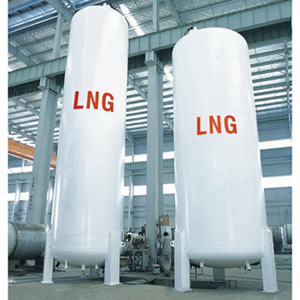LNG Could Fill the Supply and Demand gap Report by PINC Research
 Looking at the overall demand projections and even the optimistic scenario of expected domestic supplies, it is very clear that there would be a supply shortfall. Despite recent domestic discoveries, demand is far ahead of supply. Slow ramp-up of RIL gas has further increased the concerns. In the current scenario demand for imported LNG has surged in India and the capacities are coming to tap this opportunity. Therefore, there is a need to step up imports in the coming 5 years.
Looking at the overall demand projections and even the optimistic scenario of expected domestic supplies, it is very clear that there would be a supply shortfall. Despite recent domestic discoveries, demand is far ahead of supply. Slow ramp-up of RIL gas has further increased the concerns. In the current scenario demand for imported LNG has surged in India and the capacities are coming to tap this opportunity. Therefore, there is a need to step up imports in the coming 5 years.
RAMP-UP in LNG Capacity
The projections indicate that India‘s total import of LNG is estimated to witness a three-fold increase, from 48mmscmd in 2010 to 129mmscmd in 2015. The LNG supply is projected to reach a level of 15mmtpa by 2012 (Potentially it can add up 57mmscmd supplies at full capacity) and 34mmtpa by 2015 (Potentially it can add up 129mmscmd supplies at full capacity).
Some key developments
Hike in APM Gas Prices
In order to promote healthy competition, NELP was initiated in an effort to provide a level-playing field to gas exploration players. Under the terms of NELP, players are supposed to have marketing freedom and pricing power. However, the proposed “Gas Utilization Policy” interferes with the independence of exploration entities. Two prominent guidelines that have hindered the progress of NELP are 1) NELP contractors to sell gas to customers based on priorities set by the government and 2) Pricing of gas to be based on pricing formula approved by the government.
Effective June 1st, 2006, APM gas prices were hiked to USD4.2/mmbtu, 100% increase over previous levels at par with KG-D6. We believe that it’s a key step in moving towards market determined pricing and a positive development for the sector.
Section 16 of the PNGRB Act being notified.
This section empowers PNGRB to regulate the laying and expansion of pipeline and CGD networks. However, there were controversies dealing with Section 16 and PNGRB’s role in authorization process had been called into question. This caused a lot of confusion among stakeholders and a slow down in CGD authorization process. In this regard, the Delhi High Court order stating PNGRB as the sole regulator to grant authorization to CGD entities, has come as a boost for the sector and expedited the process of authorization.
Post the notification of Section 16, there has been development in CGD and pipeline laying process.
PNGRB has recently invited bids for construction of four pipelines aggregating 5675 km. Financial bidding for 2 of them is already taken place and GSPL has bagged the orders(Mehsana-Bhatinda – 1670 KM and Mallavaram-Vijapur-Bhilwara – 1585 KM). The bidding process is underway for other two pipelines (Bhatinda-Jammu-Srinagar and Surat-Paradip). PNGRB has also invited bids for laying two other pipelines, 600-km Kakinada (in Andhra Pradesh) to Chennai and Kakinada to Visakhapatnam and Srikakulam in Andhra Pradesh
Also, 4th round of bidding for CGD licensing for eight new cities has already begun which got delayed due to litigation and confusion.
Zero-tariff bidding – A loophole which is now covered
Media reports indicate that some cities with high potential witnessed aggressive bidding strategies (e g, Allahabad, Chandigarh and Ghaziabad) with bidders quoting zero network tariffs. Given that they can recover their investments through other means such as the compression charge and marketing margins which are not regulated. This strategy by the aggressive bidders has blocked the entry of new players in CGD and exposed these aggressive bidders to competition once the exclusivity period is over; any third party marketer could use the network of the successful bidder free of cost and sell gas to current or new customers in the region. PNGRB has now decided that the zero tariff bid will not be accepted and will lead to rejection of bid. At the same time, some guideline has been formulated related to network tariff.